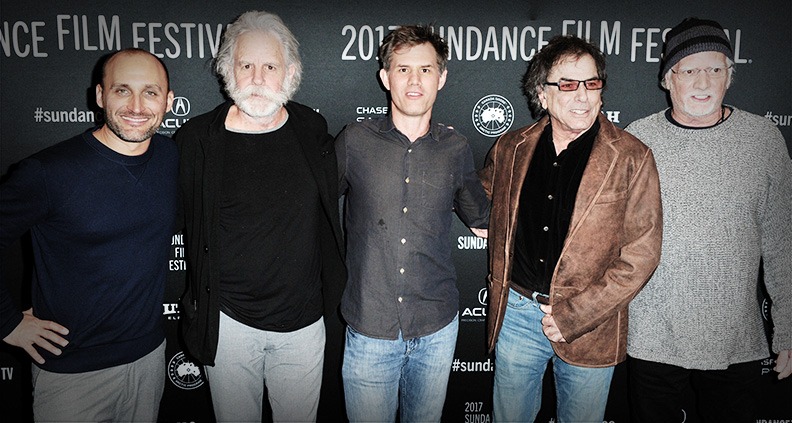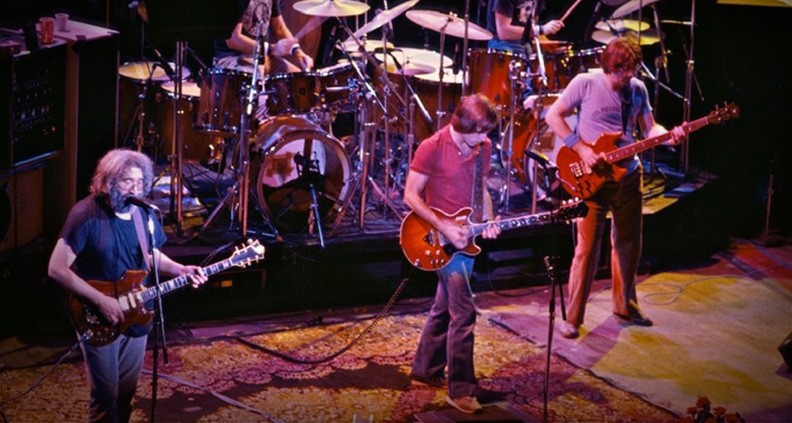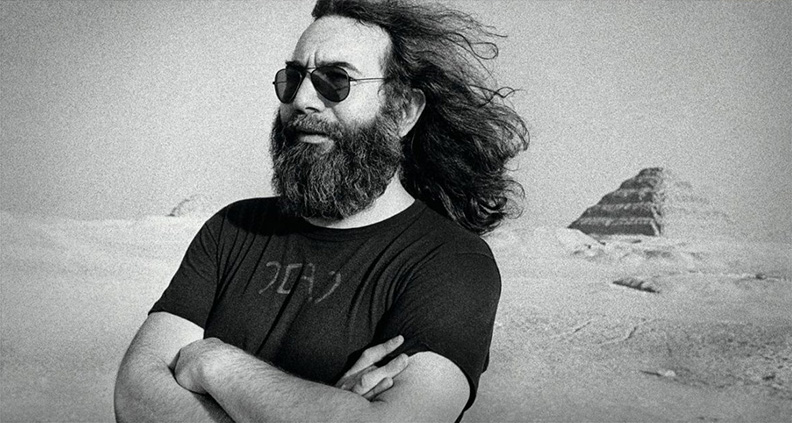Deadhead Documentarian Amir Bar-Lev on the Making of ‘Long Strange Trip’
For most of his career, Amir Bar-Lev has been attracted to stories about iconoclasm. At first glance, the Brooklyn-based documentarian’s films may seem like disparate collection of narratives—culled from worlds as diverse as high art (My Kid Could Paint That, 2007), military propaganda (The Tillman Story, 2010) and college sports scandals (Happy Valley, 2014).
But each story is really about one thing: self-perception vs. the identities imposed on you by others. Such themes likewise extend to Bar-Lev’s most recent work, Long Strange Trip—a massive four-hour biography of jam band legends The Grateful Dead.
Initially commissioned to deliver a simple 90-minute rock doc, the project quickly grew as Bar-Lev delved deep into archival materials in an attempt to grasp what made the group, its fans and in particular the band’s reluctant leader Jerry Garcia (who died in 1995) such unique 20th century figures. The result is a dense, discursive portrait of a one-of-a-kind American cultural phenomenon. Long Strange Trip premiered at Sundance earlier this year and is currently available to stream on Amazon Prime.

We recently spoke to Bar-Lev about what commonalities his subjects share, new distribution methods for nonfiction films and what The Grateful Dead means to him as both a fan and a filmmaker.
AMIR BAR-LEV
Your work has covered a diverse range of topics, from the art world, to the military, to The Grateful Dead. What’s the common theme?
Bar-Lev: I think that theme is the tension between the real world and the symbolic world. If you look at The Tillman Story, it’s the story of a family trying to wrest back the memory of their son from the mythologizing that happens to him after his death. If you look at My Kid Could Paint That, it’s a tug of war between a family and society’s sense of their daughter as a paragon of innocence. My Kid Could Paint That is the myth of the angel, Tillman is the myth of the warrior and Long Strange Trip is the messiah figure.
All these people are to one degree or another outsiders. And they build an iconography around themselves, or someone else does.
Bar-Lev: Trying to live outside of someone’s culture is often a recipe for tragedy, or for your ideas to be yanked back into the culture by cooption. With Garcia, he didn’t want to be a celebrity. He had a lot of mistrust about the notion of rock stardom. And human nature being what it is, we admired that about him and put him up on a pedestal for it, which is precisely the thing he didn’t want.
What was your relationship to The Grateful Dead like before the making of Long Strange Trip?
Bar-Lev: I’ve been [a Deadhead] since I was 13. I think I got the message that The Grateful Dead put out there. Which was: “We want to on a level playing field with you.” I think a lot of Deadheads got that message. We really did feel a sense of ownership around what was happening at Grateful Dead concerts. I don’t set out to make a film because it’s a famous topic or there’s an anniversary or something like that. I always start off by talking about something that’s going on right now. I’ll start talking about Jerry Garcia and what was interesting and authentic about The Grateful Dead. The story of The Grateful Dead is something, I think, that people should consider in our celebrity-obsessed culture. That’s how my connection to The Grateful Dead expressed itself in making this movie.

How do you earn the trust of your subjects, particularly within a subculture that’s as cloistered at the Grateful Dead’s?
Bar-Lev: I think it starts with acknowledging that people really do have a good reason to be suspicious of documentary filmmakers. I feel like if you get your film to the place where every frame is defensible, then you can sit down on the journey with your subjects with the understanding that there’s almost an inevitable tension between how they wish to be represented and how you’re going to represent them. If you’re a first-time filmmaker, my advice to you is tenacity. Even if the door has been shut in your face, you can wait outside until they have to bring you in because it’s raining. That’s what I’ve done—a lot of hearing “no” and then waiting around until “no” became “maybe” and “maybe” becomes “yes.”
How did you go about organizing your information and deciding on an overall structure for Long Strange Trip?
Bar-Lev: We were [originally] commissioned to make a 90-minute film. We had to make things work in a pretty precise way. And when we did that, we stood back at one point and said, “Oh my gosh, the film is two hours long and it’s only 1974!” So the decision was made to make a four-hour film. As far as structure, there are several times in the film where we break chronology. The reason for that is we put two things on the table that were at odds with one another: we wanted to start at the beginning on the one hand, but we also wanted to make a character-based film in which cutting between people happens infrequently. Occasionally, we had to double back and tell a story that had happened before. One of my editors, Keith Fraase, has spent years working with Terrence Malick, and the churn of material that Malick works with in his most recent films is something we were interested in.

I’m curious how companies like Amazon and Netflix have impacted the business, or even the craft, of nonfiction filmmaking.
Bar-Lev: I think those questions are better suited for the producers. Amazon just acquired this film. I don’t really make my partnerships in a deliberate way. I get interested in the subject and I partner with the producer, and the producer has their finger to the wind of where money can be found.
Have you sensed a difference in your audience between your earlier films and now based on the different distribution methods that are out there?
Bar-Lev: I’m never happy with how people see my films. My first few films that were sort of pre-streaming services, they’re hard to find. Then the more recent films… It’s hard to say. Of course I want my films to be seen in theaters. The fact that most people won’t see this film in the theater and are going to see it at home, I guess it makes me a little frustrated. But I can’t do anything about that on a certain level. I’m glad people are seeing it, period.
Lastly, do you have a particular favorite era of The Grateful Dead or a favorite live album or show that you would recommend?
Bar-Lev: I put some of my favorite songs into the soundtrack, and you could get it on Spotify or wherever. But I’m a Europe ’72 man. And I was able to put my favorite “Dark Star” into the film, which is March 1, 1969 at the Fillmore West.
Long Strange Trip is currently streaming on Amazon Prime. For more info, please visit the film’s Facebook Page. To learn more about Amir Bar-Lev, please visit his website.
Learn how to become a Member of Film Independent by visiting our website, and click here to subscribe to our YouTube channel.
